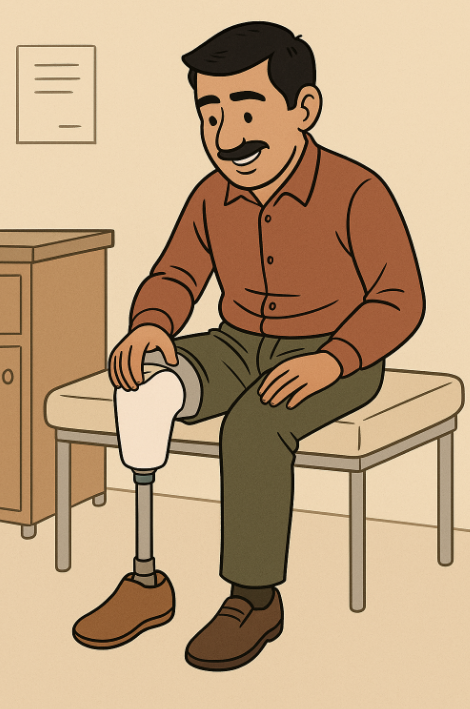
What Happens When a Prosthesis Doesn’t Fit Right?
Let’s say you lose your lower leg due to diabetes or vascular disease, like thousands of people each year. You recover, you get a prosthetic limb, and life starts to move forward again. But here’s the twist: despite your shiny new leg, something still feels… off. You’re adjusting, healing, trying your best—but the prosthetic doesn’t quite work with your body. It’s uncomfortable. It shifts. It pinches. And slowly, it erodes your quality of life.
But what if one overlooked factor could make all the difference?
A new study from the Iran University of Medical Sciences has just dropped a mic on the world of prosthetic design. The research team surveyed 168 adults with non-traumatic below-the-knee amputations—most from vascular complications like diabetes—and found that comfort isn’t just a “nice-to-have.” It’s everything.
Not All Prosthetic Parts Are Created Equal
Here’s the big question researchers wanted to answer: What parts of a prosthesis actually matter for a person’s quality of life?
Is it the fancy ankle? The look? The foot flexibility? Nope. Turns out, all roads lead to one thing: the socket—that part of the prosthesis that cradles what’s left of your leg.
Using a tool called the CLASS survey (short for Comprehensive Lower Limb Amputee Socket Survey), participants rated their prosthesis on comfort, stability, appearance, and how well it stayed in place. When those results were matched up with quality of life data, only one factor stood out as a strong predictor: comfort.
In fact, socket comfort had a whopping 0.51 correlation. That’s huge.
Translation? The more comfortable the fit, the better people felt—physically, emotionally, and socially.
The Science of “Feels Right”
Let’s put this in relatable terms.
You know how it feels when your shoe is just a little too tight? You can’t stop thinking about it. You walk funny. You cut your day short. Now, imagine that instead of shoes, it’s your leg. And instead of hours, it’s every day.
Even if the rest of the prosthesis is top-of-the-line, a poorly fitting socket can cause rubbing, skin irritation, and throw off your balance. People with an uncomfortable socket often skip activities they enjoy, such as working, exercising, or even just going out to meet friends. It’s like owning a car with a Ferrari engine but a crooked steering wheel. The power’s there, but it’s just not drivable.
Looks Matter… But Not As Much
Here’s another cool finding: aesthetics do matter—but less than you’d think. Participants who liked the appearance of their prosthetic reported a better quality of life, but the connection was relatively weak. That makes sense. If you’re in constant discomfort, even the most stylish prosthetic won’t make a difference.
Stability and suspension—the things that help a prosthesis feel steady and secure—did show a moderate impact. But still, comfort crushed them all.
So, what does this tell us? Function first. Comfort always.
Why This Study Is a Game-Changer
What makes this study so important is that it focuses on non-traumatic amputees—people who lost limbs not in accidents, but because of chronic health conditions like diabetes. This group is typically older and often has other health challenges. For them, every bit of mobility counts. If socket discomfort can be fixed, it could improve their independence, reduce clinic visits, and maybe even extend their lifespan.
Plus, comfort is a modifiable factor. We can’t reverse the effects of aging or cure diabetes overnight. But we can improve prosthetic socket design.
It’s like discovering that the key to better outcomes isn’t a moonshot technology—it’s a better cushion.
Let’s Explore Together
We often think innovation in healthcare means robots, AI, and high-tech breakthroughs. But sometimes, the biggest quality-of-life upgrade is also the most human: feeling comfortable in your own body.
Here are a few questions to ponder:
- If comfort is king, why don’t more rehab programs lead with it?
- Have you or someone you know used a prosthesis? What mattered most to them?
- What’s a small design fix in your life that made a huge difference?



